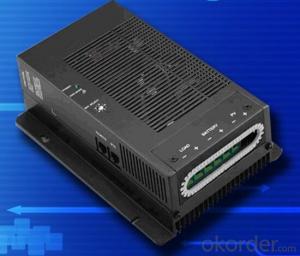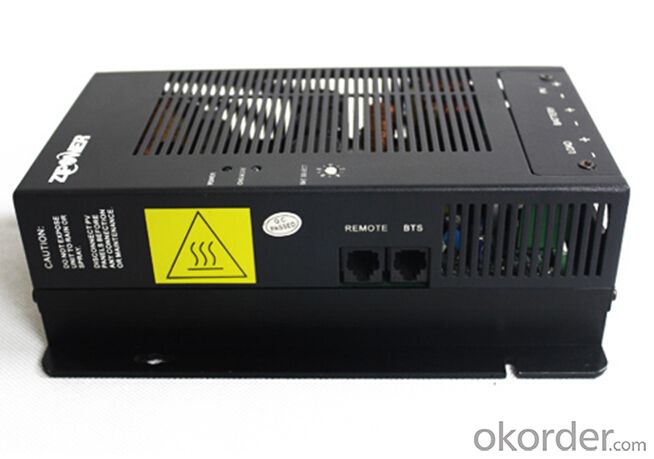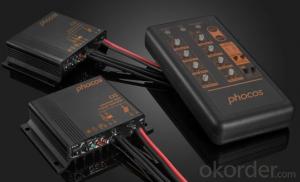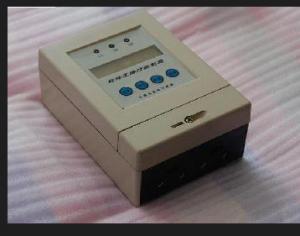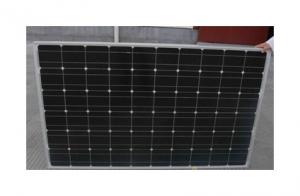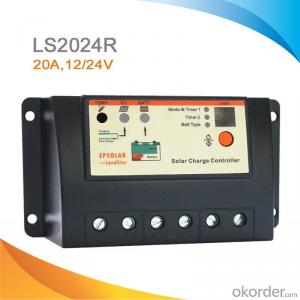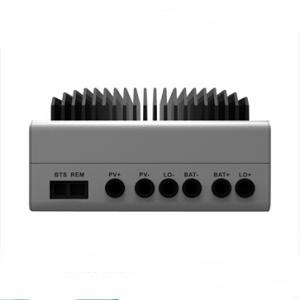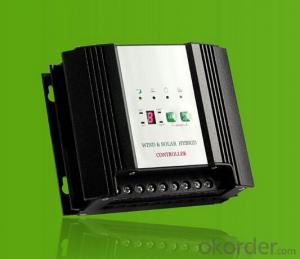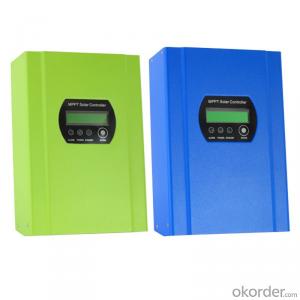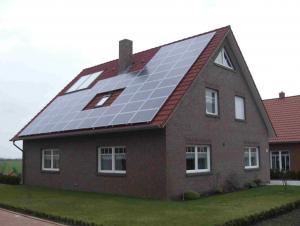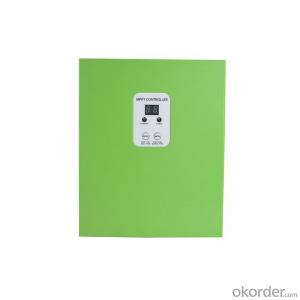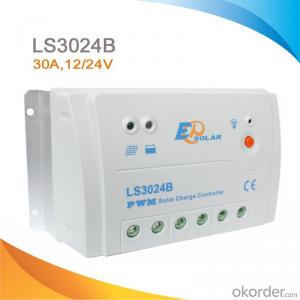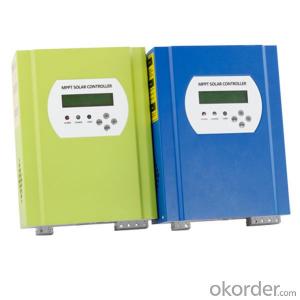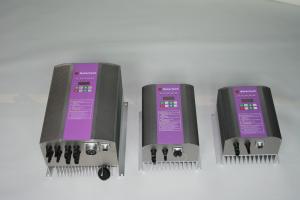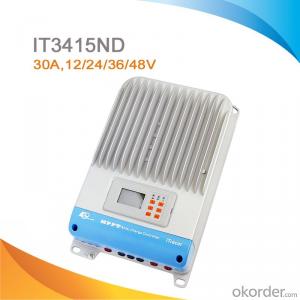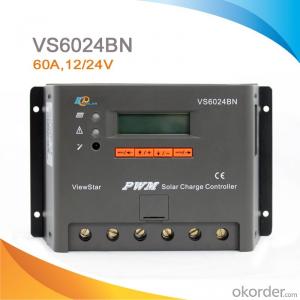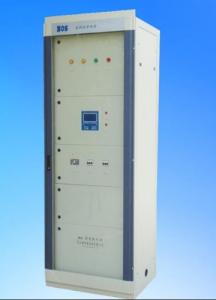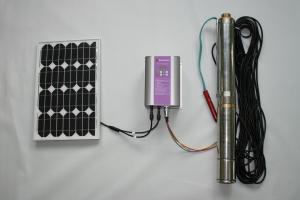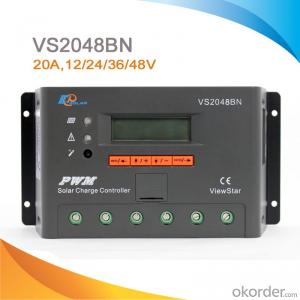Grape Solar PWM Controllers - Solar Charge Controller 12/24V Model SL-40A MPPT
- Loading Port:
- Shekou
- Payment Terms:
- TT OR LC
- Min Order Qty:
- 20 pc
- Supply Capability:
- 300 pc/month
OKorder Service Pledge
OKorder Financial Service
You Might Also Like
1. Structure of Solar Charge Controller 12/24v Model SL-40A MPPT
Solar charge controller 12/24V Model SL-40A MPPT adopts advanced MCU microprocessor control technology and MPPT technology. And 12V/24V can detect by itself to choose output voltage. It is mainly used for solar power station, home solar power system, solar street light control system,mobile solar system.
2. Main Features of Solar Charge Controller 12/24v Model SL-40A MPPT
High converting efficiency higher than 97%for minimizing energy loss
Build-in MPPT tracker for optimizing the power transformation
Reversed current protection for preventing equipment damage
Automatic battery temperature compensation for long-term reliability
Capable of selecting different charging mode for various type of batteries
Capable of connecting additional DC load for wider applications
Three stage charge control system(bulk,absorption, and float mode)with temperaturecompensation
LED indicators display charge status in real time
Pulse width modulation(PWM)topology combined with a multi-stage charge control algorithm leads to superior charging and enhanced batteryperformance
3. Solar Charge Controller 12/24v Model SL-40A MPPT Images
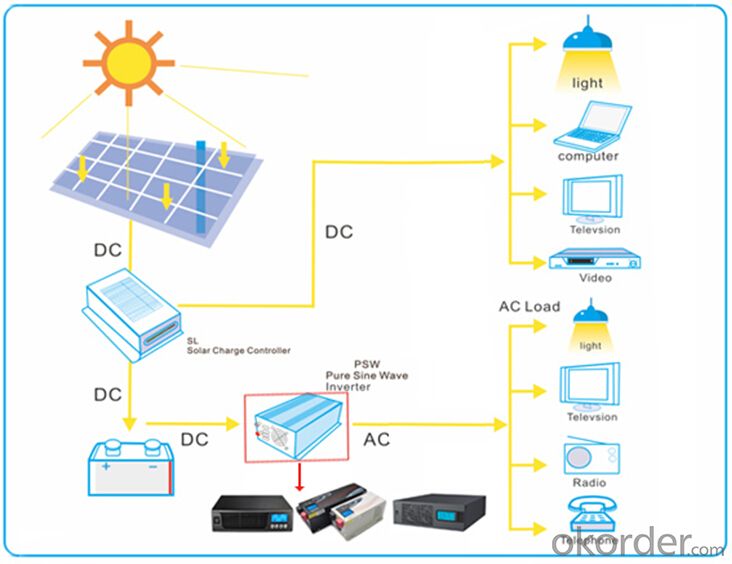
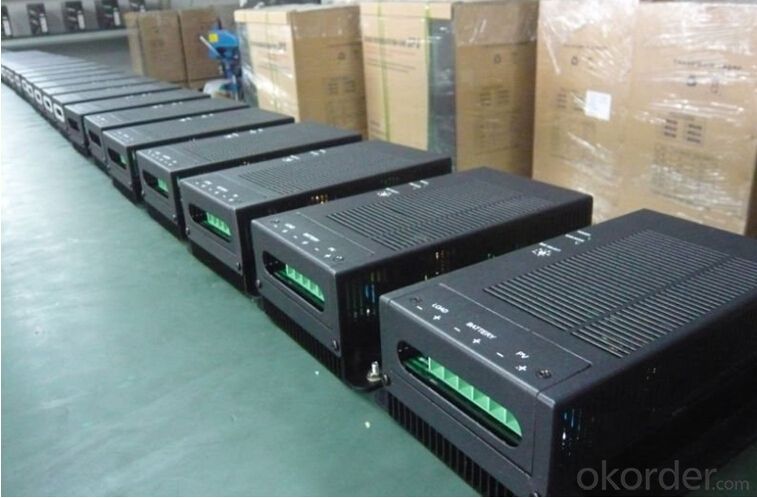
4. Solar Charge Controller 12/24v Model SL-40A MPPT Specification
| MODEL | SL-40A | |
| Rated Voltage | 12/24VDC | |
| Rated charge current | 40A | |
| Load current | 15A | |
| Input voltage rang | 15-55VDC | |
Max.PV open circuit array voltage | 55VD | |
| Typical idle consumption | <10mA | |
Overload protection (DC load) | 2.0*inom>5s 1.5*inom>20s 1.25*inom temperature controlled | |
| Bulk charge | 14.6V (default) | 29.2V (default) |
| Floating charge | 13.4V (default) | 26.8V (default) |
| Equalization charge | 14.0V (default) | 28.0V (default) |
| Over charge disconnection | 14.8V | 29.6V |
| Over charge recovery | 13.6V | 27.2V |
| Over discharge disconnection | 10.8V(default) | 21.6V(default) |
| Over discharge reconnection | 12.3V | 24.6V |
| Temperature compensation | -13.2mv/C | -26.4mv/C |
| Lead acid battery setting | Adjustable | |
| Nicad battery setting | Adjustable | |
Load control mode
| 1. Low Voltage Reconnect (LVR): Adjustable 2. Low Voltage Disconnect (LVR): Automatic Disconnection 3.Reconnection:Includes warning flash before disconnect and reconnect | |
| Low voltage reconnect | 12.0-14.0Vdc | 24.0-28.0Vdc |
| Low voltage disconnect | 10.5-12.5Vdc | 21.0-25.0Vdc |
| Ambient temperature | 0-40C (full load) 40-0C (de-rating) | |
| Altitude | Operating 5000m,Non-operating 16000m | |
| Protection class | IP21 | |
| Battery temperature sensor | BTS optional remote batter temperature sensor for increased charging precision | |
5. FAQ
Q1: How long do you need to prepare mass production?
Re: Normally we need 10-18days to finish the production, but it depends on the quantity of purchase order.
Q2: What kind of payment terms do you prefer?
Re: We prefer bank transfer or L/C,
- Q: Can a solar controller be used in both residential and commercial applications?
- Yes, a solar controller can be used in both residential and commercial applications. Solar controllers are designed to regulate and optimize the charging of batteries in solar power systems, regardless of the scale or purpose of the installation. They can be used in small residential setups as well as larger commercial systems, providing efficient control and protection for solar panels and batteries in both settings.
- Q: Can a solar controller be used with solar-powered indoor air purification systems?
- Solar-powered indoor air purification systems can indeed utilize a solar controller. This device serves as a regulator, managing the flow of electricity from the solar panels either to a battery or directly to a load. Its primary functions involve promoting efficient battery charging by the solar panels and safeguarding against overcharging or discharging. In the context of solar-powered indoor air purification systems, the solar controller plays a critical role in optimizing solar energy usage. It establishes connections with the solar panels, battery, and air purification system. Monitoring the solar panels' power generation, the solar controller then distributes this power accordingly. It charges the battery during periods of excess sunlight and supplies power to the air purification system whenever necessary. Thanks to the inclusion of a solar controller, solar-powered indoor air purification systems can operate effectively in low sunlight conditions or during times of high demand. This integration offers a reliable and efficient means of harnessing solar energy for air purification, reducing dependence on grid electricity and promoting sustainability. In conclusion, integrating a solar controller into a solar-powered indoor air purification system enhances its overall performance, guarantees efficient solar energy utilization, and contributes to fostering a cleaner and healthier indoor environment.
- Q: How does a solar controller prevent voltage instability in the system?
- A solar controller prevents voltage instability in a system by regulating and controlling the flow of electricity from the solar panels to the battery. It ensures that the voltage supplied by the solar panels matches the voltage requirements of the battery, thus preventing overcharging or undercharging. Additionally, a solar controller monitors the voltage and temperature of the battery and adjusts the charging process accordingly to maintain optimal performance and prevent any voltage fluctuations that could lead to instability in the system.
- Q: How does a solar controller prevent damage to the solar panels from environmental pollutants?
- A solar controller helps prevent damage to solar panels from environmental pollutants by regulating the flow of electricity from the solar panels to the connected battery or grid. One of the key functions of a solar controller is to protect the solar panels from overcharging, which can occur due to excessive sunlight exposure or higher voltage levels. Overcharging can lead to increased heat generation and can make the solar panels more vulnerable to damage from environmental pollutants. The solar controller continuously monitors the voltage and current levels of the solar panels and ensures that they remain within safe operating limits. If the voltage or current exceeds the specified levels, the solar controller automatically adjusts the charging process to prevent overcharging and potential damage to the panels. Furthermore, a solar controller also helps prevent damage from environmental pollutants by providing protection against reverse current flow. During periods of low or no sunlight, when the solar panels are not generating electricity, there is a risk of reverse current flowing back from the battery or grid into the panels. This can cause damage to the solar cells. The solar controller prevents this reverse current flow by blocking it and ensuring that the flow of electricity is always in the desired direction. In addition to these protective functions, some advanced solar controllers also incorporate features like temperature compensation, which adjusts the charging parameters based on the ambient temperature. This helps optimize the charging process and prevents potential damage to the panels caused by extreme temperature variations. Overall, by regulating the charging process, preventing overcharging, and blocking reverse current flow, a solar controller plays a vital role in safeguarding the solar panels against damage from environmental pollutants and ensuring their long-term performance and durability.
- Q: Are there any safety features built into solar controllers?
- Yes, solar controllers typically have safety features built-in to protect the system and users. Some common safety features include overcharge protection, short circuit protection, reverse polarity protection, and temperature compensation. These features help prevent damage to the batteries and ensure the safe operation of the solar system.
- Q: How long does a solar controller typically last?
- A solar controller typically lasts for about 10 to 15 years, depending on the quality of the product and the usage conditions.
- Q: How do I determine the maximum load output current for a solar controller?
- To determine the maximum load output current for a solar controller, you need to refer to the specifications provided by the manufacturer. These specifications should indicate the maximum load output current supported by the controller. Additionally, it is important to consider the load requirements and ensure they are within the limits specified by the manufacturer to avoid overloading the solar controller.
- Q: What is the maximum charging current for a solar controller?
- The maximum charging current for a solar controller varies depending on the specific model and its capabilities. It can range from a few amps to several tens of amps, depending on the capacity and design of the solar controller.
- Q: How do I connect solar panels to a solar controller?
- Follow these steps to connect your solar panels to a solar controller: 1. Begin by positioning your solar panels in a location that receives maximum sunlight throughout the day. Make sure they are securely mounted and properly angled for optimal sun exposure. 2. Locate the positive and negative terminals on your solar panels, which are typically labeled as "+" and "-". Consult the user manual or markings on the panels for accurate identification. 3. Once you have found the terminals, make the connections. Attach the positive terminal of the first solar panel to the positive input terminal of the solar controller using a solar panel cable or wire with appropriate connectors. Repeat this step for the negative terminals, connecting the negative terminal of the first solar panel to the negative input terminal of the solar controller. 4. If you have multiple solar panels, follow the solar controller's specifications and your energy requirements to determine whether to connect them in series or parallel. In series connections, link the positive terminal of one panel to the negative terminal of the next panel. In parallel connections, connect all positive terminals together and all negative terminals together. 5. Double-check all the connections to ensure they are secure. Loose connections can result in power loss and inefficiency. 6. Finally, connect the solar controller to your battery bank or power inverter. Most solar controllers have separate terminals for battery connections, labeled as "+" and "-". Connect the positive terminal of the battery to the positive output terminal of the solar controller, and the negative terminal of the battery to the negative output terminal of the solar controller. 7. After completing the connections, power on the solar controller and monitor the charging status. The solar controller will regulate the power flow from the solar panels to the battery bank, ensuring efficient charging and preventing overcharging. Always refer to the user manual provided with your specific solar panels and solar controller for any manufacturer-specific instructions or guidelines.
- Q: What are the key features to consider when choosing a solar controller?
- When choosing a solar controller, some key features to consider include the controller's maximum current and voltage ratings, its compatibility with your solar panel system, the type of charge regulation it offers (such as PWM or MPPT), its efficiency and conversion rate, the availability of advanced features like temperature compensation and load control, and the overall durability and reliability of the controller.
Send your message to us
Grape Solar PWM Controllers - Solar Charge Controller 12/24V Model SL-40A MPPT
- Loading Port:
- Shekou
- Payment Terms:
- TT OR LC
- Min Order Qty:
- 20 pc
- Supply Capability:
- 300 pc/month
OKorder Service Pledge
OKorder Financial Service
Similar products
Hot products
Hot Searches
Related keywords
